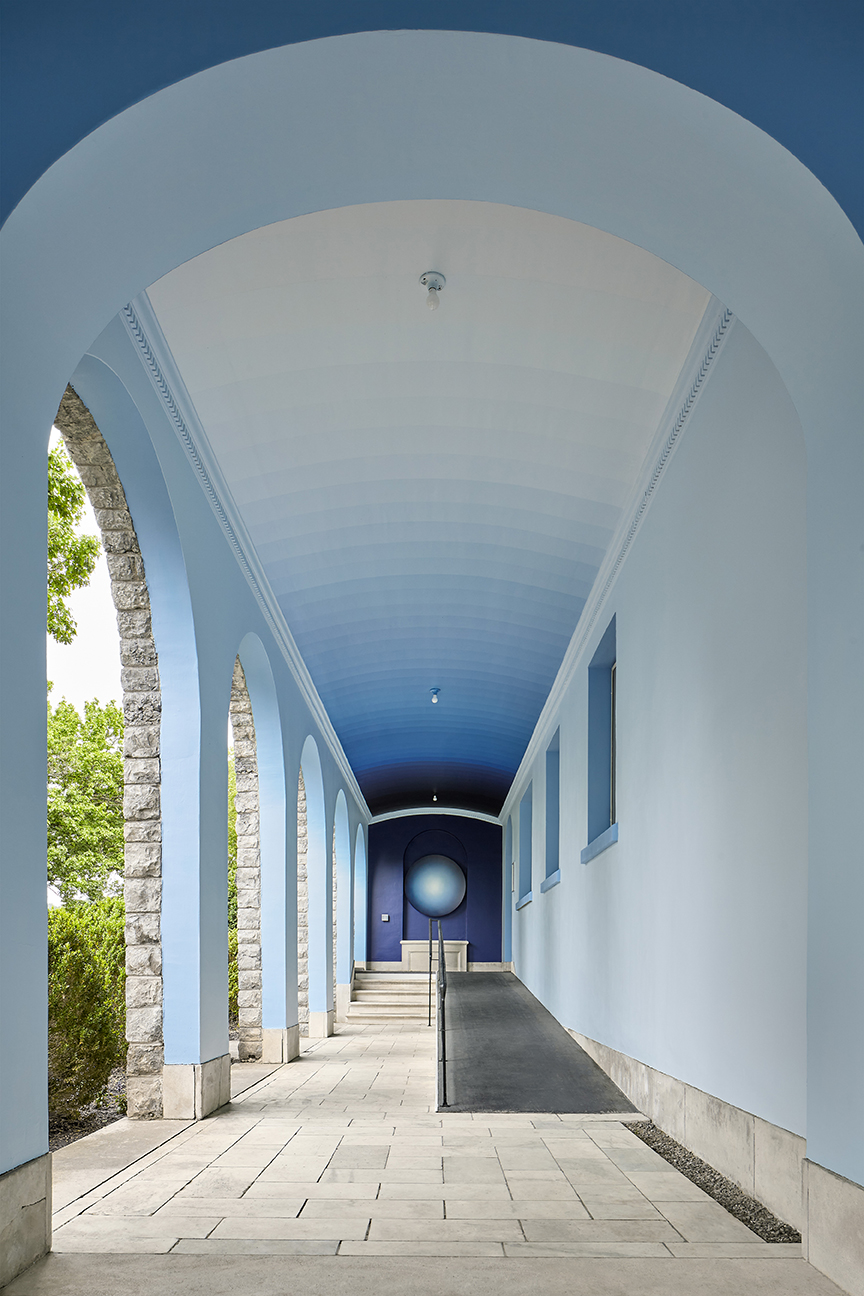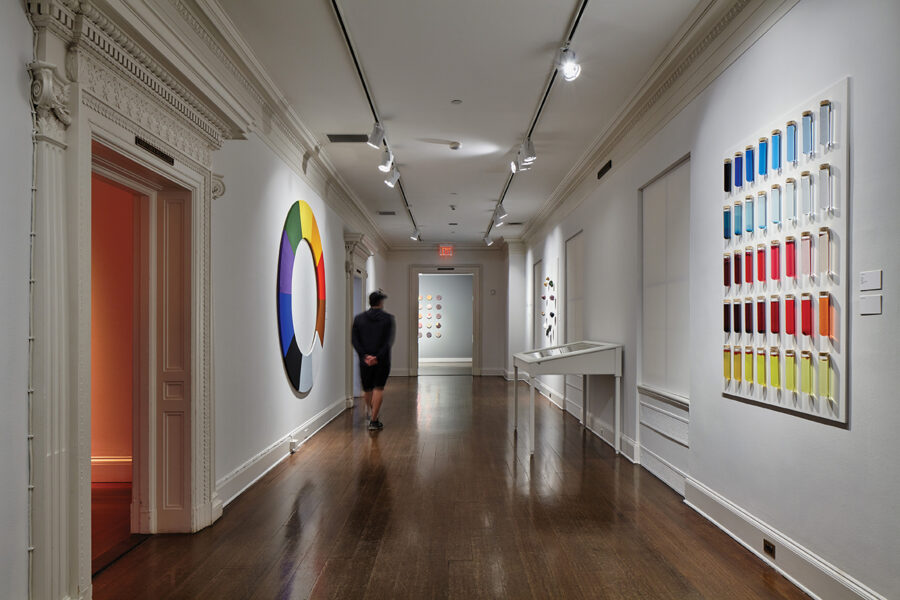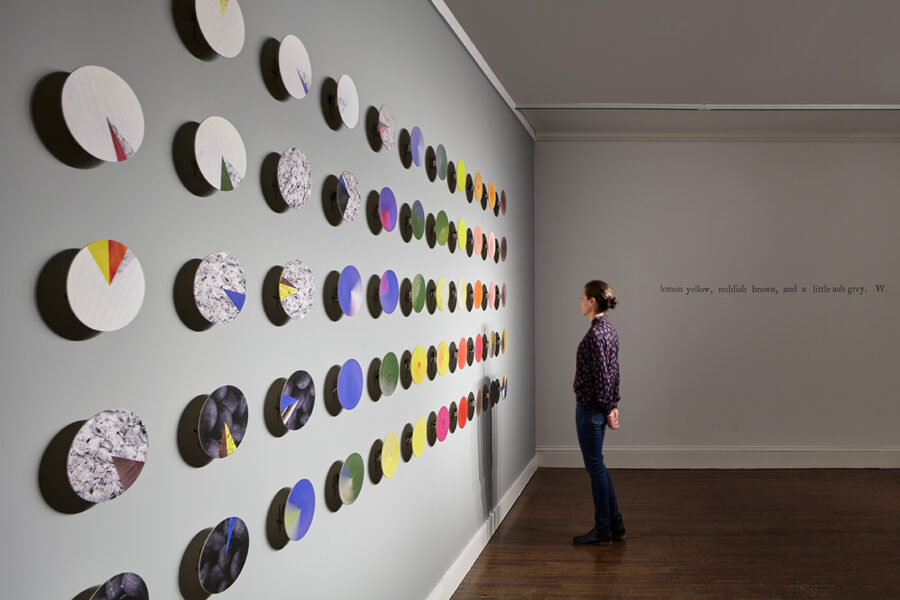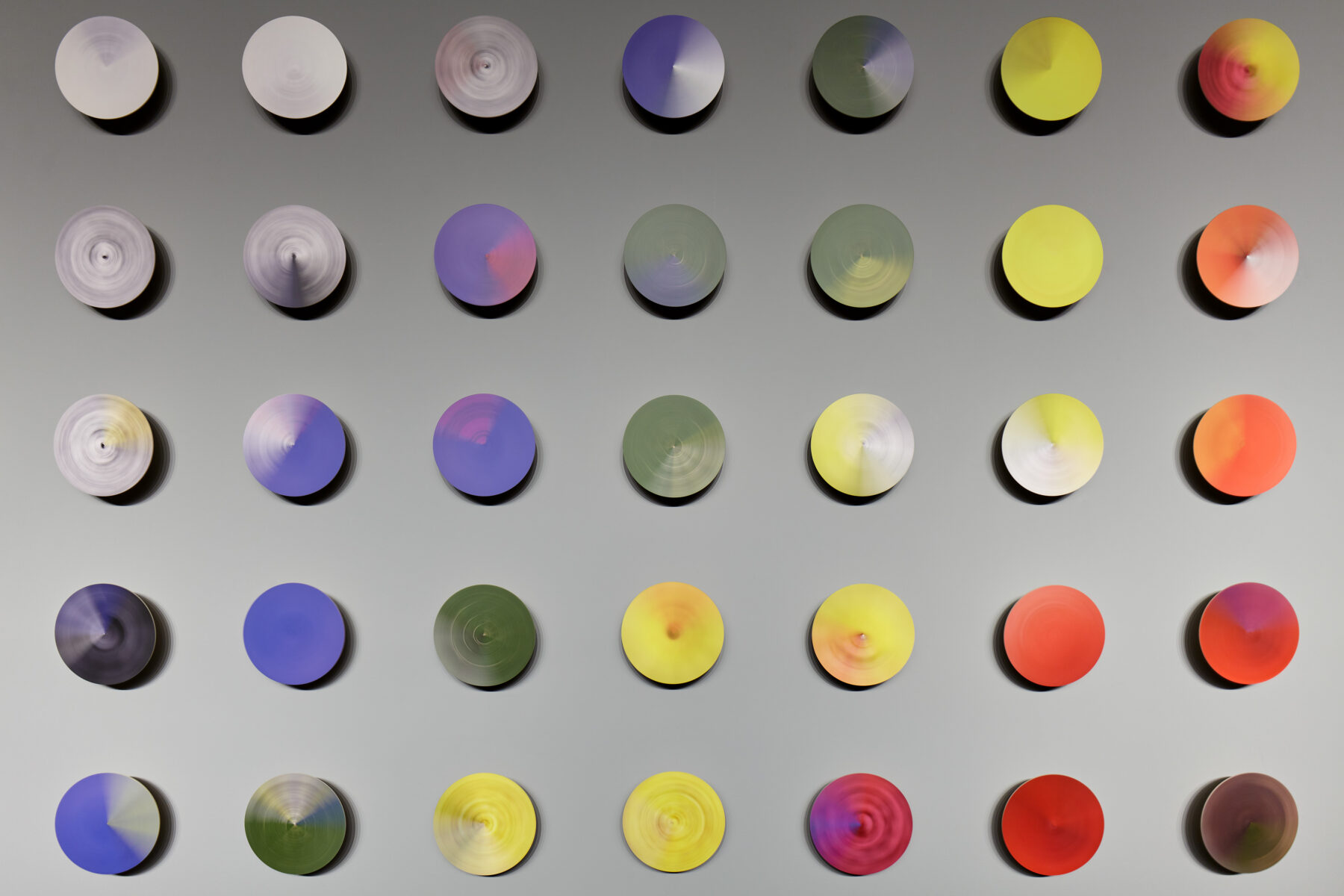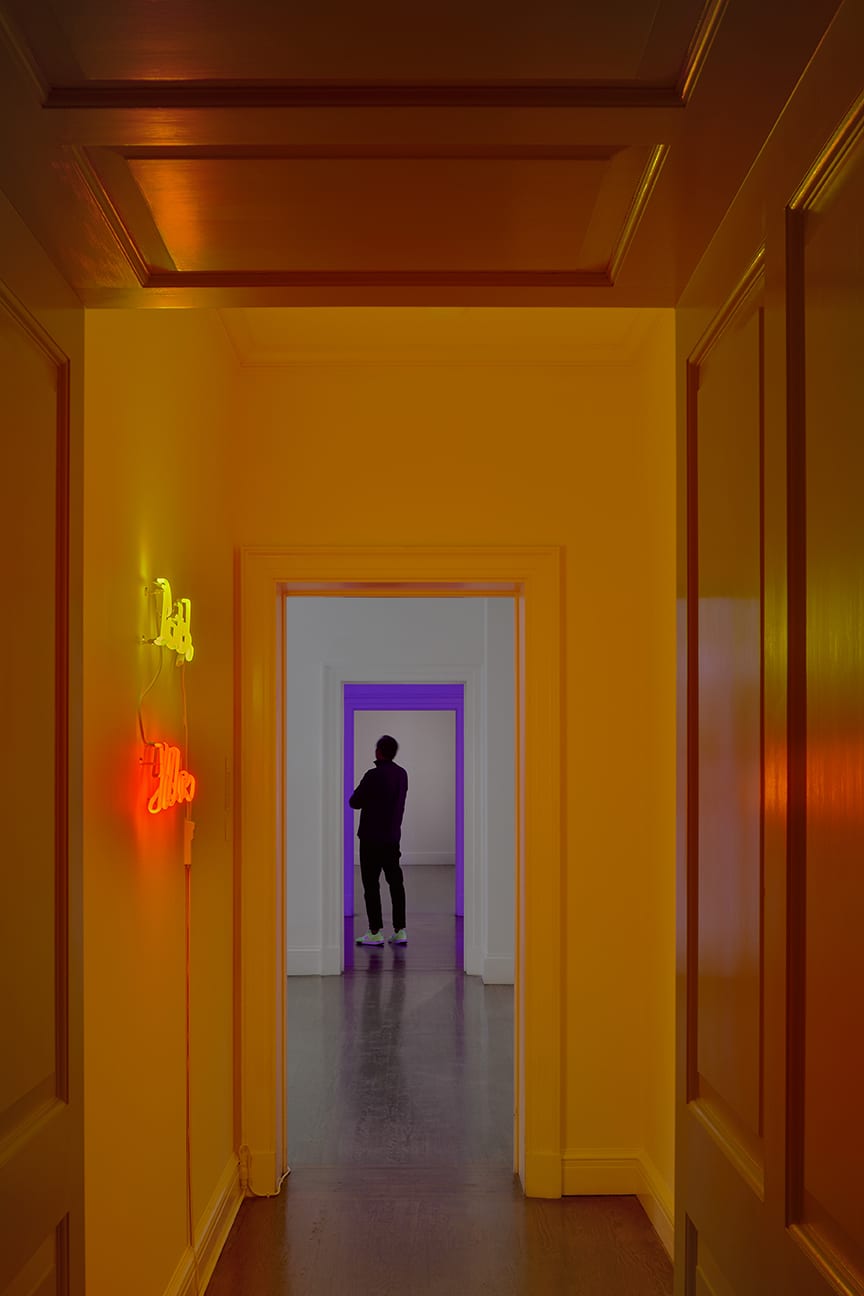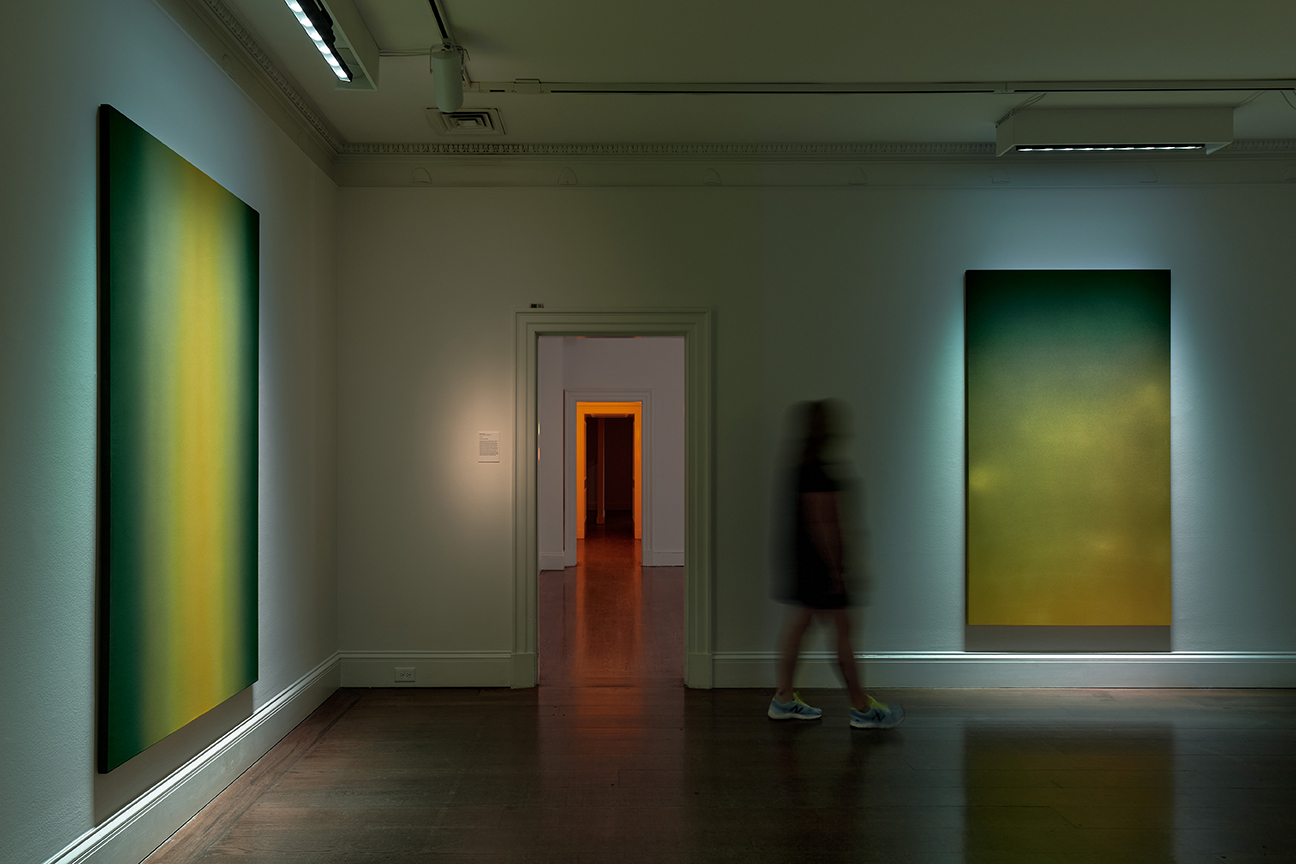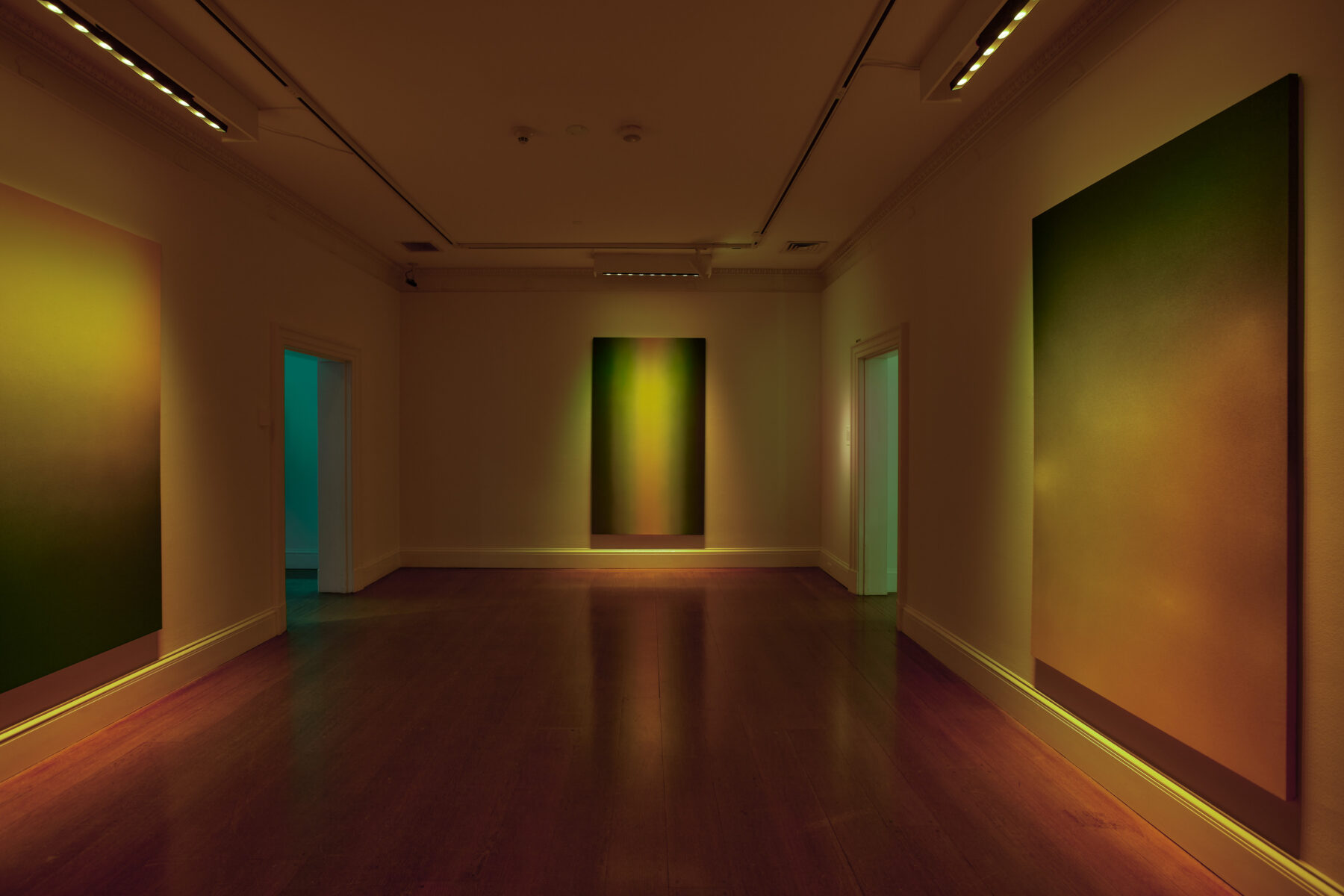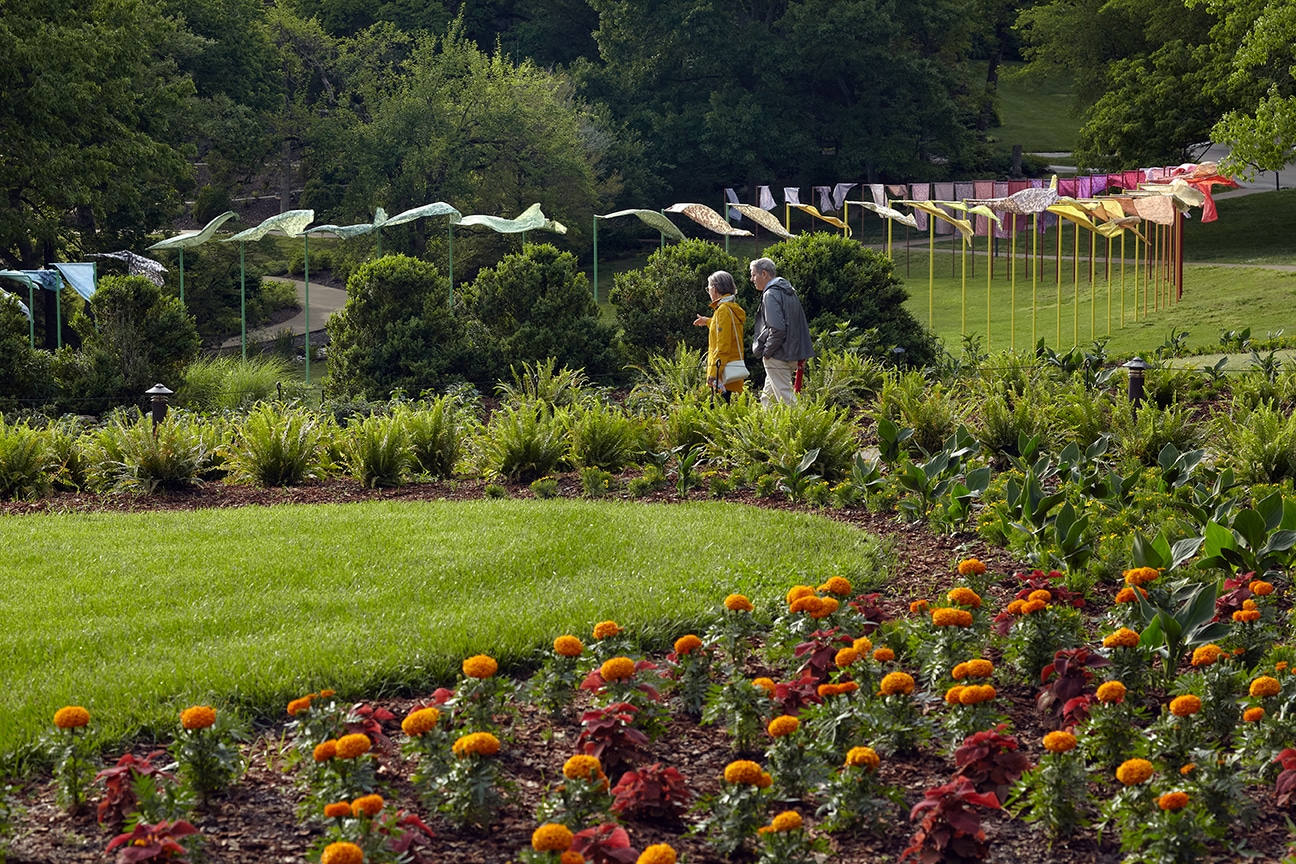Cheekwood Estate & Gardens, Nashville, TN, May 7-September 4, 2022
The contemporary understanding of color has a rich and complex history, whether through the histories of plant-based pigments like indigo, or the development of color theory through the discourses of Enlightenment-era writers, scientists, and naturalists. One of the most significant examples of the latter is the Scottish artist Patrick Syme’s Werner’s Nomenclature of Colours. First published in 1814 and based on the groundbreaking work of German geologist Abraham Gottlob Werner, the book presented a taxonomic guide to the colors of the natural world and was a precursor to the modern Pantone system. Color—and more specifically the color classified in Werner’s Nomenclature of Colours—served as the conceptual springboard for a vibrant site-specific takeover at the Cheekwood Estate & Gardens in Nashville, TN. In this unique context, COLORSCAPES explores how the historic, yet fundamental scientific knowledge of color, perception, and nature can inform and connect us to the natural world today.
COLORSCAPES consisted of a series of dynamic outdoor installations and gallery interventions. Set along a prescribed path, the exhibition unfolds across Cheekwood’s Bradford Robertson Color Garden, Arboretum Lawn, and Bracken Foundation Children’s Garden before moving up to the portico of the Historic Mansion & Museum and into its more intimately scaled galleries. Inside, Luftwerk created a series of immersive color and light installations using botanical colors in combination with color changing light conditions that transform into abstracted, atmospheric experiences. Whether using natural pigments, exploring the phenomenon of light and color in the sky, or building on the histories explored in the gardens, the works installed in the galleries are informed by a holistic perception of the natural world and an interconnected ecology. “Unity through variety” is the mantra of this site-specific exhibition, which will offer a multi-layered journey that responds to and connects with the different gardens, architecture, and collections of Cheekwood.
- Commissioned by
- Cheekwood Estate & Gardens
- Curator
- Marin R. Sullivan
Sky Blue, 2022
Paint and plastic
In 1789, the Swiss scientist and mountaineer Horace-Bénédict de Saussure (1740-1799) invented a device called a cyanometer (or cyanomètre). A simple tool made to measure the blueness of the sky, it is essentially a circle of paper with gradients of Prussian blue that move from white to black in fifty-two distinct degrees of color. Saussure, along with subsequent scientifically minded explorers like Alexander von Humboldt (1769-1859), used the device to demonstrate that the color of the sky grows darker with increases in elevation. Sky Blue transforms the existing architecture of the portico of Cheekwood’s Historic Mansion into an inhabitable cyanometer. In this environmental installation the ever-present if often unnoticed connection between sky, place, nature, color, and individual acutely perceptible and felt.
Looking Hall, 2022
Books, minerals, botanic dye samples in beakers, and pigment and hide glue on board
Continuum, 2022
Prints and electrical motors
Werner’s Nomenclature of Colours was never simply a list of differently named colors, but rather a system, a roadmap for understanding how colors come to be and how they exist in the world. Crucial to this formation was the embedded assertion throughout the text that colors are the result of a combination of colors. Building on the exploration of spinning discs in Prairie Blooms installed outside in the Bracken Children’s Gardens, Continuum uses custom-built electric motors to spin fifty-five individual circular sculptures, whose surfaces are composed of uniquely printed color configurations that when activated create new tones. The number of discs was determined by the fifty-four original colors specified by Werner in 1774, but adds one new combination created by the artists.
Light Dips into Dark Falls into Light, 2022
Aluminum, pigment, and LED lighting
Based on the principles of a Venn Diagram, which uses overlapping circles to illustrate the relationships among or between distinct sets of things, Light Dips into Dark Falls into Light explores how colors combine to explore how colors incline towards one another, and combine to become secondary colors. Comprised of three groups of pure yellow ochre, oxide green, and ultramarine pigments, this sculptural work is activated by special LED lighting, which creates a cyclical visual flow between light and darks, which dramatically alters and confuses the optical and spatial understanding of the work’s form.
Exact Dutch Yellow, 2022
Neon
A play on words and the act of naming, Exact Dutch Yellow references how subjective both the impression and classification of color was and remains. In Patrick Syme’s book, Werner’s Nomenclature of Colours, “Dutch Orange” is described by the crest of a gold-crest wren, the common marigold, and a streak of red orpiment, an arsenic sulfide mineral. When the noted English biologist Charles Darwin (1809-1882), for example, embarked on his now famous journey aboard the HMS Beagle between 1831-1826, he brought along Syme’s book and used it extensively. Darwin often used the exact phrasing to describe the creatures he encountered, for example a “French grey” octopus that changed shades from a “Hyacinth red” to a “Chesnut brown.” Darwin, however, occasionally ad-libbed, altering “Dutch Orange” to “Exact Dutch Yellow” when he published his Beagle Zoology Notes. Realized here in two shades of neon, Darwin’s turn of phrase washes the transitional space of a hallway with a dramatic orange glow.
Chromatic Blooms, 2022
Stainless steel and Soraa 10-degree LED light bulbs
Beyond pigments, tints, dyes, hues, and expectations created through the evolution of the visual cortex, color is also intimately connected to the sensory phenomenon of light. Color is the differing qualities of light reflected or emitted by an object or substance and is thus an effect of light—a link first proven by Isaac Newton in 1666, when he passed a beam of light through a prism. Bringing together a seemingly simple combination of stainless-steel relief sculptures and spotlights, Chromatic Blooms transforms one of Cheekwood’s galleries into a complex examination of the science of perception and reflection. As the German writer and scientist Johann Wolfgang von Goethe argued in his Theory of Colours (1840), however, color is also more than simply a scientific measurement. He was the first person to systematically study of the physiological effects of color, and argued that every person experiences color, and thus light, differently.
Meadow, 2022
Canvas, paint, and LED lighting
In addition to his work on Werner’s Nomenclature of Colours, Patrick Syme was the most renowned Scottish flower painter of his time. Taking inspiration from his combined exploration of the botanical and the aesthetic, Meadow is made from paint derived from hues of botanicals like marigold and indigo collected from last summer’s Color Garden plantings at Cheekwood as well as from Humboldt Park in Chicago. As this painted meadow is illuminated, its various diffused colors come to life, allowing the work—and the viewer(s) who experience it—to explore the interplay on tones, especially those that live between the light and the dark. The subtle ombre gradation of Meadow evokes the experience of a landscape at dusk.
Color Suite in Topography
Color Suite in Topography represents the whole of Syme’s nomenclature, expressed through unique flag designs made from patterns of repeating flora.
Snow White, Reddish White, Purplish White, Yellowish White, Orange-colored White, Greenish White, Milk-White, Greyish White
Ash Grey, Smoke Grey, French Grey, Pearl Grey, Yellowish Grey, Bluish Grey, Greenish Grey, Blackish Grey
Greyish Black, Bluish Black, Greenish Black, Pitch or Brownish Black, Reddish Black, Ink Black, Velvet Black
Scotch Blue, Prussian Blue, Indigo Blue, China Blue, Azure Blue, Ultramarine Blue, Flax-Flower Blue, Berlin Blue, Verditter Blue, Greenish Blue, Greyish Blue
Bluish Lilac Purple, Bluish Purple, Violet Purple, Pansy Purple, Campanula Purple, Imperial Purple, Auricula Purple, Plum Purple, Red Lilac Purple, Lavender Purple, Pale Bluish Purple
Celandine Green, Mountain Green, Leek Green, Blackish Green, Verdigris Green, Bluish Green, Apple Green, Emerald Green, Grass Green, Duck Green, Sap Green, Pistachio Green, Asparagus Green, Olive Green, Oil Green, Siskin Green
Sulphur Yellow, Primrose Yellow, Wax Yellow, Lemon Yellow, Gamboge Yellow, Kings Yellow, Saffron Yellow, Gallstone Yellow, Honey Yellow, Straw yellow, Wine Yellow, Sienna Yellow, Ochre Yellow, Cream Yellow
Dutch Orange, Buff Orange, Orpiment Orange, Brownish Orange, Reddish Orange, Deep Reddish Orange

